Wax Flamingos (2024)
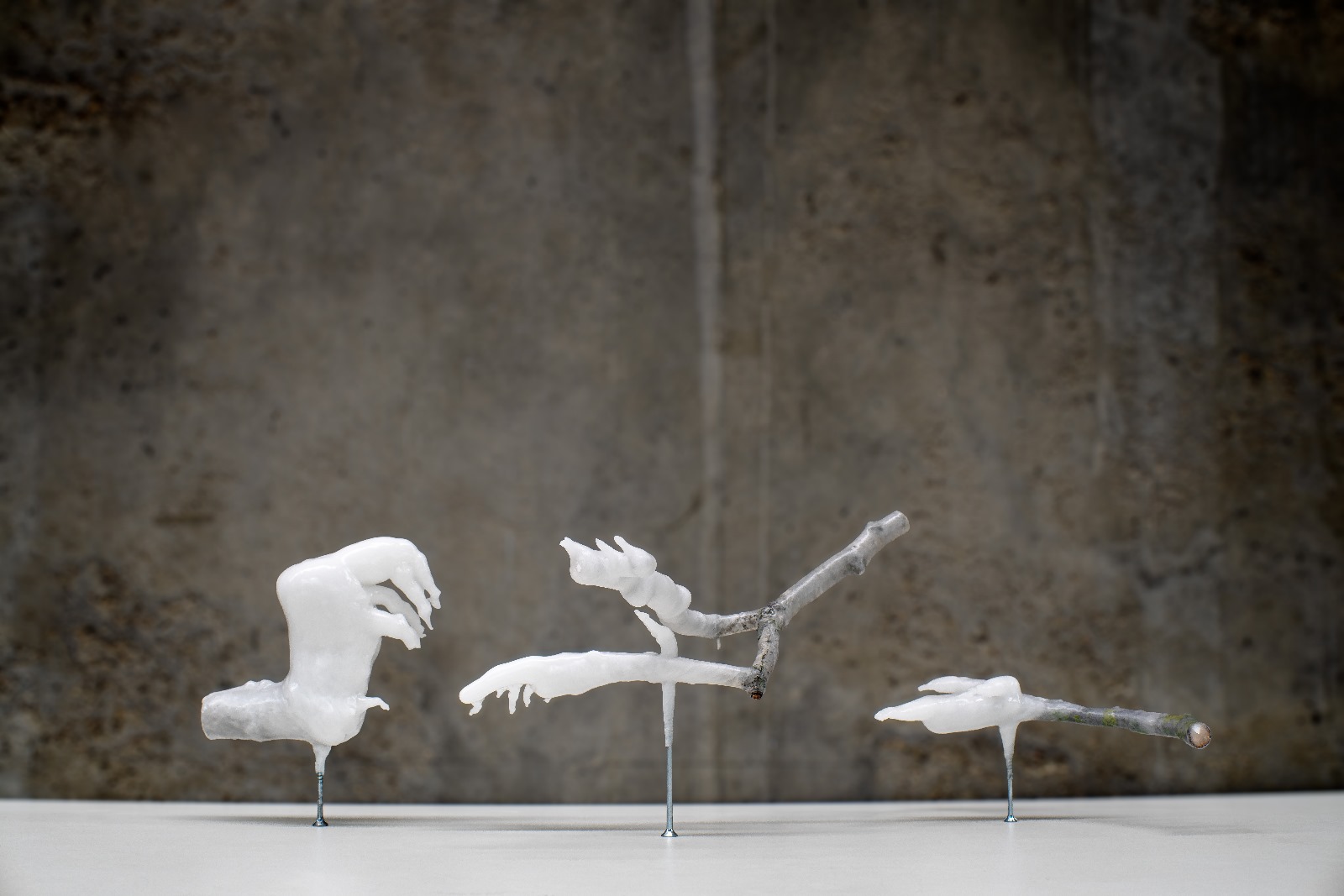
Wax Flamingos is an exploration of behavioral robotics, a fabrication concept that responds in real-time to feedback from environment sensors in order to—among other things—enable fabrication of objects that are virtually impossible to predict, such as the indeterminate material wax. This project was a collaboration with Otto Lindstam and Samuel Slezak.
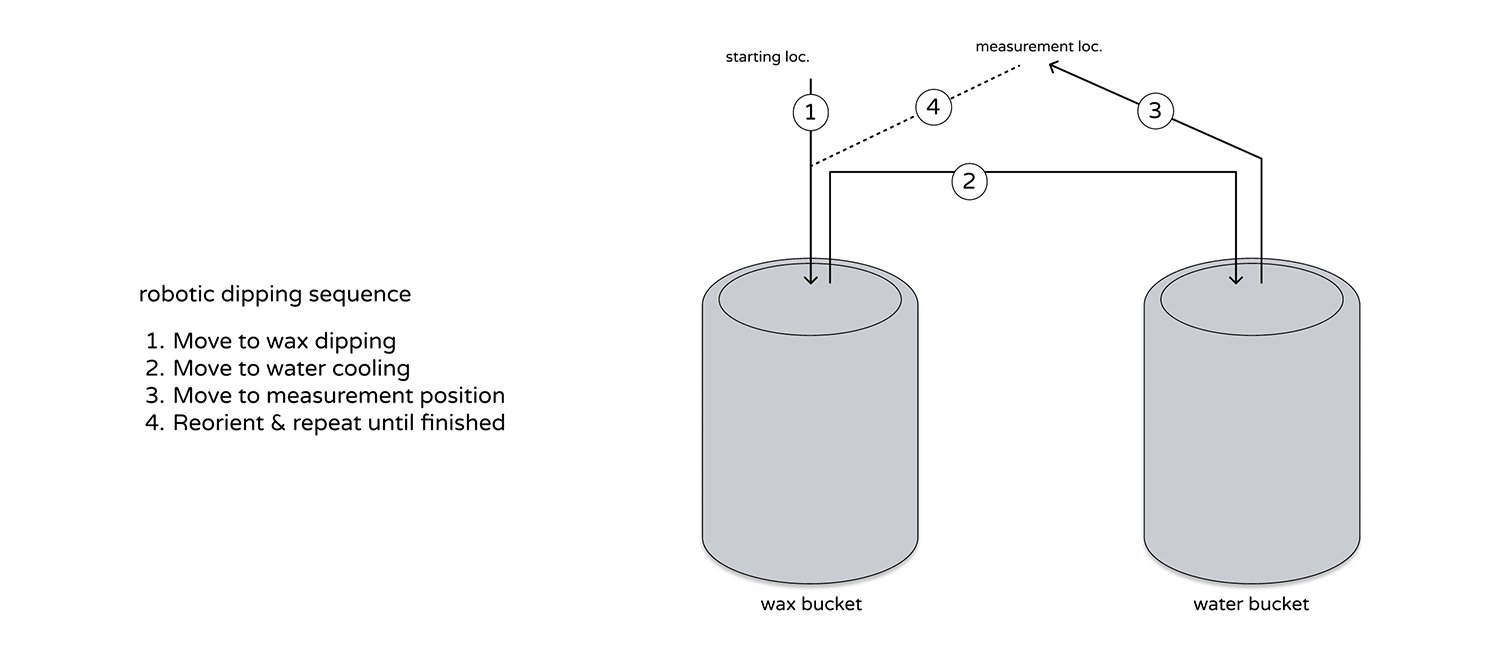
Drawing from the craft of candle-making, this project employed the use of a dipping setup, complete with a hot wax bucket and a cool water bucket. The addition of a measurement location meant that data of the wax could be measured once the wax was mostly hardened, influencing the next dip.
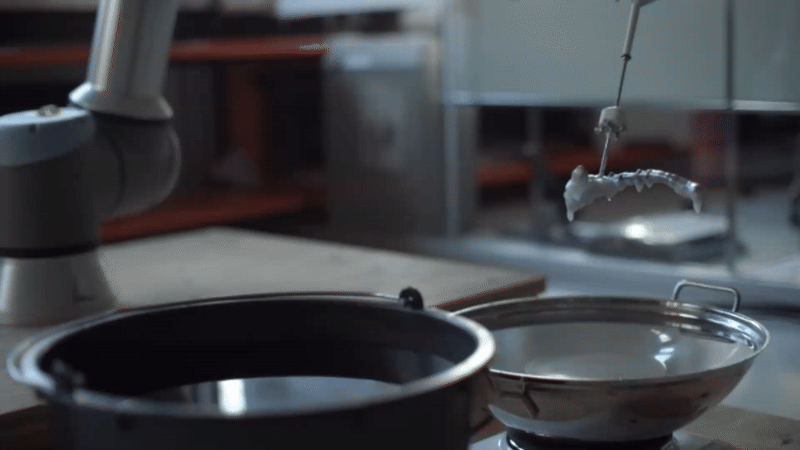 | 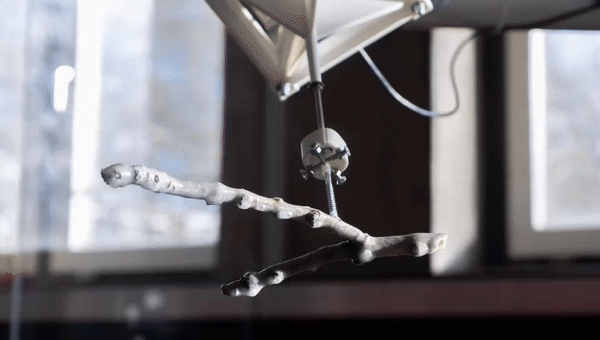 |
The objective was to robotically add wax to a found-object with the aim of positioning the object's center of mass above the support location. This would require precise deposition of the wax, a challenge that might be better suited for the accuracy of an industrial robotic arm. This project used a screw as a support for a tree branch found-object.

To ensure the proper placement of wax, the center of mass is measured before each dip, making use of a custom end effector and four pressure sensors. Center of mass calculation is quite simple, since the nail support is a vertical line, the center of mass is projected to a 2D plane, simplifying to a weighted sum equation.

Once the center of mass is found, the robot arm receives a next orientation, determined by the difference between of the current center of mass and the target center of mass. The robotic arm prepares for the next movement by rotating and angling the end effector to achieve the desired positioning.

Next, the robot dips the found-object in the wax, allows the wax to sag for a moment, then submerges it in the water to cool the object, then measures the center of mass once again. This process repeats until the object's center of mass is near enough to the target, determined by the user.

The process results in numerous stalactites forming from low points of the found-object which develop as the wax drippings begin to cool. Quite quickly, large amounts of wax accumulate at these stalactite nodes, as shown in the following image.
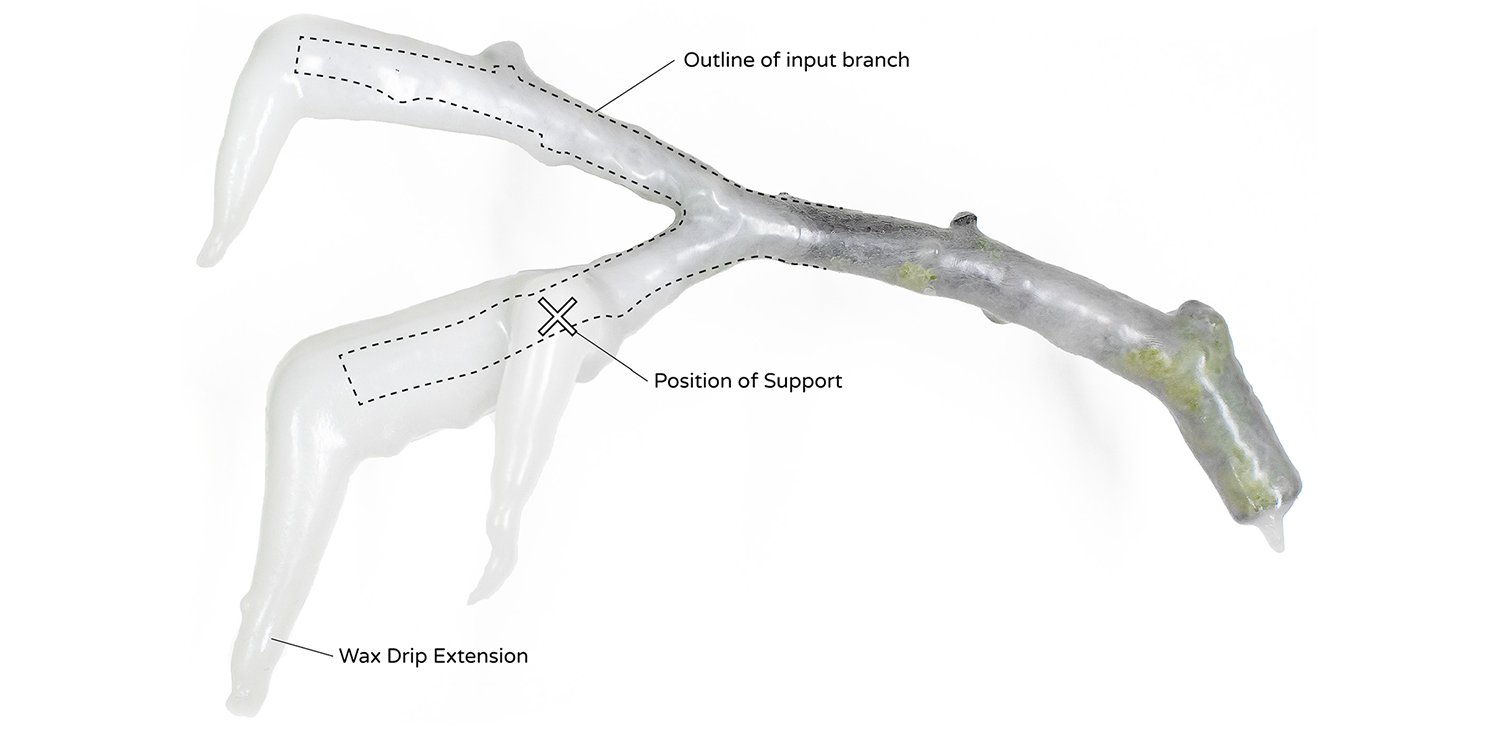
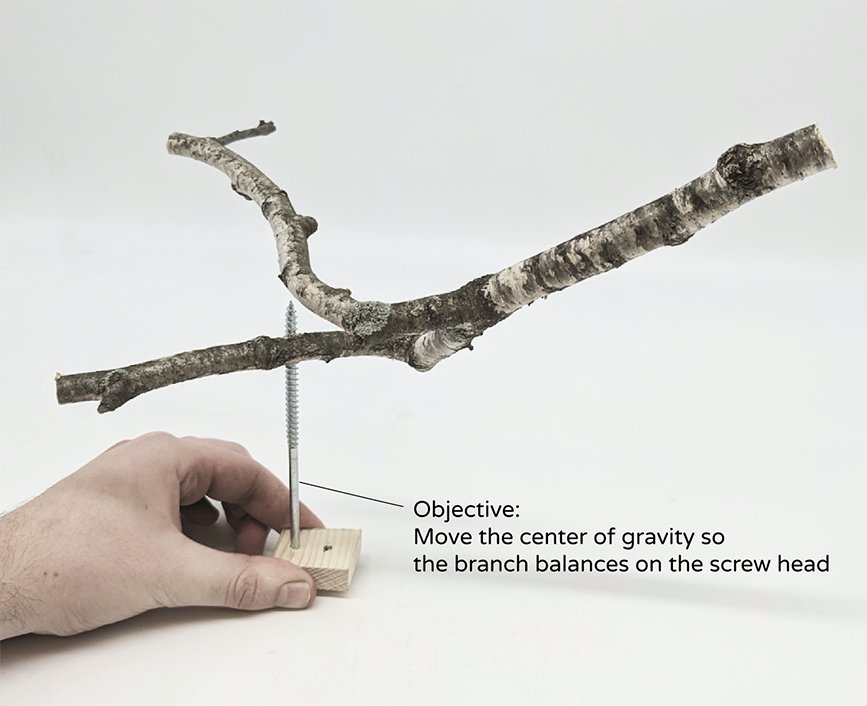 | 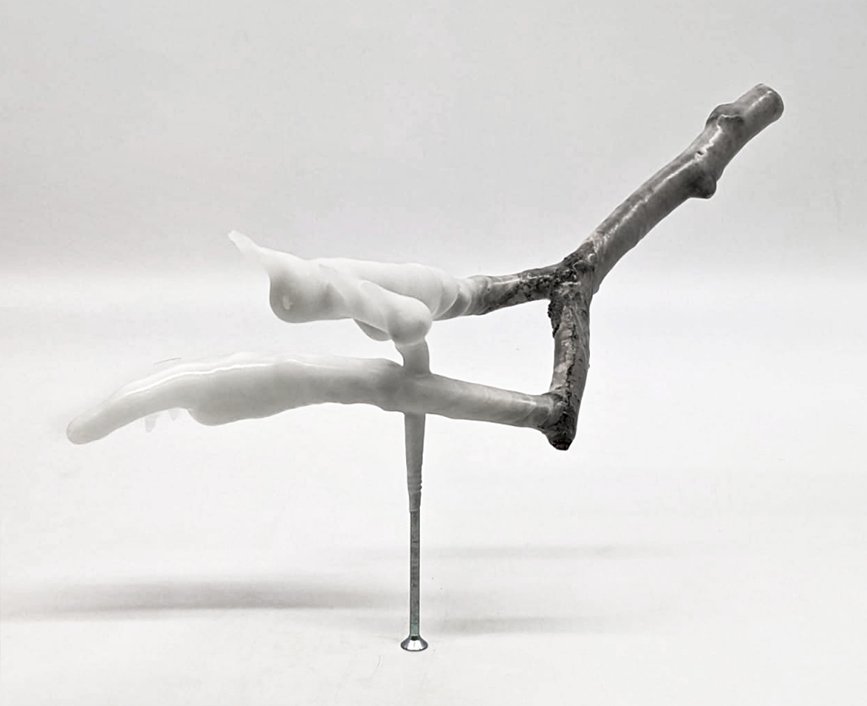 |
- 2025
- Primitive Slicer
- 2024
- Semantic Floor Plans
- ITECH Research Pavilion
- Wax Flamingos
- Phenomena Modeling
- 2023
- Honeycomb
- Water-QWOP
- Horse & Chariot
- Hyper-hydration
- 2022
- Sprawl & Resilience
- 2021
- Cybernetic Field
- Bubble-GAN
- 2020
- ELC: Carrick
- 15-112: placeHolder
- Collaborative Winding
- 2019
- Flood Museum
- Design Fabrication
- Spring Garden Hostel
- Modular Garden
- Bathhouse
- 2018
- Hoophouse
- Drawings